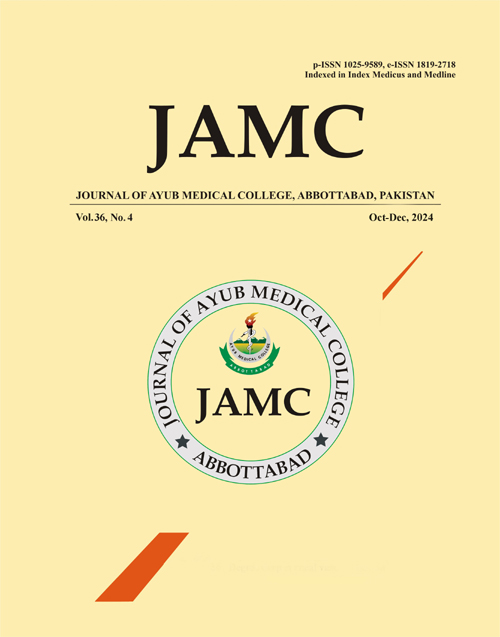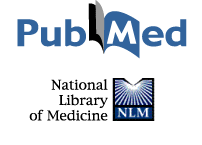EVALUATING THE EFFICACY OF COGNITIVE BEHAVIORAL THERAPY FOR AMPHETAMINE USE DISORDER: IMPACT OF SOCIO-DEMOGRAPHIC AND BEHAVIORAL FACTORS IN PAKISTAN
DOI:
https://doi.org/10.55519/JAMC-04-14131Keywords:
Cognitive Behavioral Therapy, Amphetamine Use Disorder, Socio-Demographic Factors, Behavioral Factors, Pakistan, Substance Use TreatmentAbstract
Background: Worldwide there is a growing recognition of amphetamine use disorder (AUD) as a significant public health problem. There is high prevalence in Pakistan. In the category of most potent central nervous system stimulants, amphetamines carry the high risk of severe dependence and multiple adverse health consequences. The objective of this study is to provide evaluation of efficacy of CBT for AUD in Pakistani population and impact of sociodemographic and behavioral factors. Methods: A quasi-experimental design was applied with 100 participants recruited from outpatient treatment centers and rehabilitation centers in Pakistan. A culturally adapted CBT program was delivered to 50 participants along with treatment as usual and standard treatment as usual (TAU) was given to control group with 50 participants. Addiction Severity, anxiety, depression, psychological wellbeing, quality of life, as well as relapse rates were measured using pretest and posttest assessments. Descriptive statistics, paired t-tests, ANOVA, multiple regression and survival analysis were completed to analyze the data. Results: The frequency of amphetamine use from pre to post change from 5.8 to 2.3 days per week (p<0.001) and ASI, addiction severity index scores from pre to post change from 30.2 to 18.7 (p<0.001) was significant in the CBT group. On the behavioral as well as on the psychological measures, improvements were observed, as evidenced by a decrease in the BDI from 22.4 to 14.1 (p<0.001) and a decrease in the GAD-7 from 18.5 to 11.3 (p<0.001). Significantly higher Quality of Life (WHOQOL-BREF) scores improved from 45.3 to 62.0 (p<0.001). But the TAU group also got better, just not as much as the CBT group. Positive associations were found with socio-demographic factors (such as higher education, stable employment and strong family support) and negative associations with unemployment, longer duration of addiction and regular alcohol intake. Conclusions: Both the effectiveness of CBT and its suitability to reduce amphetamine use, enhance psychological wellbeing, and improve quality of life among individuals with AUD.
References
1- Smith J, Brown P, Taylor R. Pharmacology of drugs used as stimulants. J Clin Pharmacol 2021;61(Suppl 2):S53–69.
2- Tobolski J, Sawyer DB, Song SJ, Afari ME. Cardiovascular disease associated with methamphetamine use: a review. Heart Fail Rev 2022;27:2059–2065.
3- Chiappini S, Gramuglia PD, Mosca A, Cavallotto C, Miuli A, Corkery JM, et al. Methylphenidate abuse and misuse in patients affected with a psychiatric disorder and a substance use disorder: a systematic review. Front Psychiatry 2024;15:1508732.
4- Stokes AL. Cognitive behavioral therapy and addiction disorders: A study of effectiveness of digital mental health interventions [dissertation]. [Internet]. Liberty University; 2023. [cited 2024 Nov]. Available from: https://digitalcommons.liberty.edu/doctoral/4158
5- McHugh RK, Hearon BA, Otto MW. Cognitive behavioral therapy for substance use disorders. Psychiatr Clin North Am 2010;33(3):511–25.
6- Magill M, Ray L, Kiluk B, Hoadley A, Bernstein M, Tonigan JS, et al. A meta-analysis of cognitive-behavioral therapy for alcohol or other drug use disorders: treatment efficacy by contrast condition. J Consult Clin Psychol 2019;87(12):1093–1105.
7- Harada T, Tsutomi H, Mori R, Wilson DB. Cognitive-behavioural treatment for amphetamine-type stimulants (ATS)-use disorders. Campbell Syst Rev 2019;15(1–2):e1026.
8- Lee NK, Jenner L, Harney A, Cameron J. Corrigendum to “Pharmacotherapy for amphetamine dependence: a systematic review” [Drug Alcohol Depend. 191 (2018) 309–337]. Drug Alcohol Depend 2018;192:238.
9- Braveman P, Gottlieb L. The social determinants of health: it's time to consider the causes of the causes. Public Health Rep 2014;129(Suppl 2):19–31.
10- Schmidt LK, Bojesen AB, Nielsen AS, Andersen K. Duration of therapy – Does it matter? A systematic review and meta-regression of the duration of psychosocial treatments for alcohol use disorder. J Subst Abuse Treat 2018;84:57–67.
11- Cyr ME, Etchin AG, Guthrie BJ, Benneyan JC. Access to specialty healthcare in urban versus rural US populations: a systematic literature review. BMC Health Serv Res 2019;19:974.
12- Kreek M, Nielsen D, Butelman ER, LaForge S. Genetic influences on impulsivity, risk taking, stress responsivity and vulnerability to drug abuse and addiction. Nat Neurosci 2005;8(11):1450–7.
13- Afuseh E, Pike CA, Oruche UM. Individualized approach to primary prevention of substance use disorder: age-related risks. Subst Abuse Treat Prev Policy 2020;15:58.
14- Mohammadpoorasl A, Ghahramanloo AA, Allahverdipour H, Augner C. Substance abuse in relation to religiosity and familial support in Iranian college students. Asian J Psychiatry 2014;9:41–44.
15- Tsoh JY, Chi FW, Mertens JR, Weisner CM. Stopping smoking during first year of substance use treatment predicted 9-year alcohol and drug treatment outcomes. Drug Alcohol Depend 2011;114(2–3):110–8.
16- Zamboni L, Centoni F, Fusina F, Mantovani E, Rubino F, Lugoboni F, et al. The effectiveness of cognitive behavioral therapy techniques for the treatment of substance use disorders: A narrative review of evidence. J Nerv Ment Dis 2021;209(11):835–45.
17- Magill M, Kiluk BD, Ray LA. Efficacy of Cognitive Behavioral Therapy for Alcohol and Other Drug Use Disorders: Is a One-Size-Fits-All Approach Appropriate? Subst Abuse Rehabil 2023;14:1–11.
18- Chand SP, Kuckel DP, Huecker MR. Cognitive behavior therapy. In: StatPearls [Internet]. Treasure Island (FL): StatPearls Publishing; 2024.
19- van den Berk Clark C, Moore R, Secrest S, Tuerk P, Norman S, Myers U, et al. Factors associated with receipt of cognitive-behavioral therapy or prolonged exposure therapy among individuals with PTSD. Psychiatr Serv 2019;70(8):703–13.
20- Keefe JR, Chambless DL, Barber JP, Milrod BL. Treatment of anxiety and mood comorbidities in cognitive-behavioral and psychodynamic therapies for panic disorder. J Psychiatr Res 2019;114:34–40.
21- Morris L, Stander J, Ebrahim W, Eksteen S, Meaden OA, Ras A, et al. Effect of exercise versus cognitive behavioural therapy or no intervention on anxiety, depression, fitness and quality of life in adults with previous methamphetamine dependency: a systematic review. Addict Sci Clin Pract 2018;13(1):4.
22- Batterham PJ, Neil AL, Bennett K, Griffiths KM, Christensen H. Predictors of adherence among community users of a cognitive behavior therapy website. Patient Prefer Adherence 2008;2:97–105.
23- Salomonsson S, Santoft F, Lindsäter E, Ejeby K, Ingvar M, Öst LG, et al. Predictors of outcome in guided self-help cognitive behavioural therapy for common mental disorders in primary care. Cogn Behav Ther 2019;49(6):455–74.
24- Cook RR, Jaworski EN, Hoffman KA, Waddell EN, Myers R, Korthuis PT, et al. Treatment initiation, substance use trajectories, and the social determinants of health in persons living with HIV seeking medication for opioid use disorder. Subst Abus 2023;44(4):301–12.
25- Heilig M, MacKillop J, Martinez D, Rehm J, Leggio L, Vanderschuren LJMJ. Addiction as a brain disease revised: why it still matters, and the need for consilience. Neuropsychopharmacology 2021;46(10):1715–23.
26- Ersche KD, Sahakian BJ. The neuropsychology of amphetamine and opiate dependence: implications for treatment. Neuropsychol Rev 2007;17(3):317–36.
27- Chen X, Orom H, Hay JL, Waters EA, Schofield E, Li Y, et al. Differences in rural and urban health information access and use. J Rural Health 2019;35(3):405–17.
28- Riaz K, Sajid M, Ishtiaq M, Amin H. Barriers and access to mental healthcare in rural areas of Pakistan: an inferential statistical analysis. J Popul Ther Clin Pharmacol 2024;31(9):2892–2902.
29- Iuso S, Severo M, Trotta N, Ventriglio A, Fiore P, Bellomo A, et al. Improvements in treatment adherence after family psychoeducation in patients affected by psychosis: preliminary findings. J Pers Med 2023;13(10):1437.
30- Kluwe-Schiavon B, Viola TW, Grassi-Oliveira R, Tractenberg SG. Editorial: Polysubstance abuse and cognitive dysfunction. Front Behav Neurosci. 2022;16:916921.
Downloads
Published
How to Cite
Issue
Section
License
Copyright (c) 2024 Abrar Hussain Azad, Ijaz Ali, Farhan Nazir, Muhammad Usman Anjum, Muhammad Ali Raza, Ahmed Azaeem Dar, Shaaray Abrar Umar, Pashma Wazir

This work is licensed under a Creative Commons Attribution-NoDerivatives 4.0 International License.
Journal of Ayub Medical College, Abbottabad is an OPEN ACCESS JOURNAL which means that all content is FREELY available without charge to all users whether registered with the journal or not. The work published by J Ayub Med Coll Abbottabad is licensed and distributed under the creative commons License CC BY ND Attribution-NoDerivs. Material printed in this journal is OPEN to access, and are FREE for use in academic and research work with proper citation. J Ayub Med Coll Abbottabad accepts only original material for publication with the understanding that except for abstracts, no part of the data has been published or will be submitted for publication elsewhere before appearing in J Ayub Med Coll Abbottabad. The Editorial Board of J Ayub Med Coll Abbottabad makes every effort to ensure the accuracy and authenticity of material printed in J Ayub Med Coll Abbottabad. However, conclusions and statements expressed are views of the authors and do not reflect the opinion/policy of J Ayub Med Coll Abbottabad or the Editorial Board.
USERS are allowed to read, download, copy, distribute, print, search, or link to the full texts of the articles, or use them for any other lawful purpose, without asking prior permission from the publisher or the author. This is in accordance with the BOAI definition of open access.
AUTHORS retain the rights of free downloading/unlimited e-print of full text and sharing/disseminating the article without any restriction, by any means including twitter, scholarly collaboration networks such as ResearchGate, Academia.eu, and social media sites such as Twitter, LinkedIn, Google Scholar and any other professional or academic networking site.










